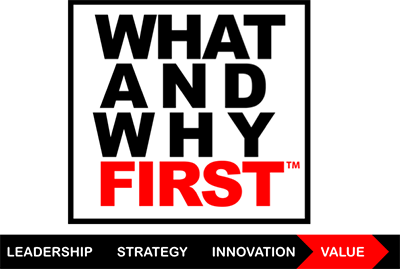The Strategy Behind Engagement Models

Digital composite image of businesspeople shaking hands against map background
An interesting topic associated with the “what and why” I would like to discuss with you is about engagement models.
An engagement model is a framework that defines collaboration among stakeholders. It determines a level of control and responsibility, as well as provides a base for further relationship development and value creation. There are many different types of engagement models. The transactional and relational engagement models are at the top of my list.
Engagement models are important because there is a tendency to think in terms of transactions, rather than relationships. It is easier to quantify rather than qualify the type of engagement one might be experiencing at some point in time. Additionally, one must consider the fluidity and dynamic forces that might pull the nature of the engagement in one direction or another.
Transactional engagements are easy to identify, quantify, classify, and place in the appropriate box. Unless you have a design or arts background, most disciplines encourage transactional thinking. In addition, solution initiatives are often triggered by pain points, desired gains, and activities that are transactional in nature to start with. Basically, when you have been told you are a “hammer,” everything is a “nail.”
There is a time and place to think of our client engagement context as transactional. It helps us to establish, agree, monitor, and enforce key performance indicators (KPIs). The measurement effort associated with transactional engagements allows planning and executing while having objective trigger points to abandon, modify, or persist on toward a given course of action.
On the other hand, thinking in terms of relational engagements takes more effort and assertiveness. These are about how well the relationship is going, rather than qualifying or quantifying the last transaction. They are about the long-term versus the short-term. They are more about what each party involved gives rather than what they receive. The transactional model explains the optimal what/when/who/how; the relational model explains the “why.”
Optimizing transactional engagements allows organizations to deliver the appropriate (and more often than not, minimum) level of service or product that meets goals, constraints, and dependencies, while still achieving a level of acceptable customer satisfaction and value perception. The level of value being delivered and the level of customer satisfaction are inversely correlated to the frequency of transactions one might expect with a given customer.
Business Case
Let’s illustrate with an example. Two passengers traveling on the same flight approach the airline service counter and ask the airline representative for a change to their itinerary onto an earlier flight to the same destination. Both customers have a very compelling reason to request the earlier departure. One passenger is told that she could be added to the waiting list for a fee. The other passenger is told that she could be added to the waiting list for free.
Now let’s examine the dynamics at play about how airlines might determine whether to charge a transaction fee if a customer wants to take an earlier flight to the same destination on the same date. If the customer is a low transactional flyer (i.e., below a certain number of flights or mileage), just being placed on the waiting list for an earlier flight might incur additional fees. However, if the customer is a high transactional flyer, most likely the waiting-list fee will be waived. In the former case, the airline is not that concerned with customer satisfaction. It does not mean that airlines don’t care; it simply means that, from a transactional perspective, the laws of supply and demand are maximized. Charging the low-frequent flyer passenger a fee for something that otherwise could be free, is most likely a rare occurrence in terms of that passenger’s experience. Regardless of whether the low-frequent flying passenger pays for the change fee or not, most likely she will forget the experience and move on.
If the passenger is a frequent flying customer, the airline is more concerned with the relationship they have established with that high-value, frequent passenger. It is not just about the transaction, but it is more importantly about making that experience the best possible. The fact that the passenger has more transactions with the airline not only makes her more valuable from a transactional perspective, but also means that a bad experience (i.e., charging for that flight-change request) will have an amplified effect on how that passenger feels or perceives the value of the relationship.
Now, there is a twist on this airline passenger story. The two passengers work for the same company and belong to the same working team. Each passenger made travel arrangements using the same corporate travel website. They came together on this trip to meet with a client and close an important deal. The business meeting went well and the client was pleased with the business proposal and the deal was approved. At the airport, the airline representative knows that, at the individual discrete level, one traveler is a frequent flying customer and the other is not. What the representative does not know is that somewhere, perhaps in a dark corner of the airline’s data systems, there is a piece of information that could have linked or related these two travelers. The airline representatives should have known that, at the corporate level, the common employer of these two travelers is indeed a valuable frequent-flying corporate account. Basically, that hidden relational connector in the airline’s frequent flying program could have allowed airline representatives to recognize the relationship between an individual passenger and the corporate account that is actually sponsoring the trip. Because of that gap, the airline representative was only able to waive the waiting list fee for one of the travelers while being forced to charge a fee to the other traveler. Moreover, because both travelers are now able to compare their experiences with each other, they both end up with a negative perception of their collective experience. By focusing only on the transaction, the airline neglected to see the more comprehensive, relational view. They missed that valuable hidden relational connector that could have made all the difference in those two passengers’ travel experience.
The What and Why First
Transactional engagement models are valuable for assessing short-term behaviors and quickly sourcing quantifiable data to gain a better understanding of how actors react within an engagement model. On the other hand, relational engagement models are long-term in nature and have a higher perceived value proposition to the stakeholders. Why does that matter? Depending on your business model, an awareness of the differences between transactions and relationships could represent the differentiating factor you need to enhance your capacity to compete effectively and create value. Finally, if you are able to identify, expose, and leverage those elusive hidden relational connectors, then transactions can be executed in a more relational context, resulting in more engaging, positive, and memorable experiences.
As always, I am eager to hear your comments and feedback:
- What are your thoughts about transactional vs. relational engagements?
- How would you classify your organization: is it more transactional driven than relational driven and why?
-
Have you ever found hidden relational connectors? If you have, please share that experience.
